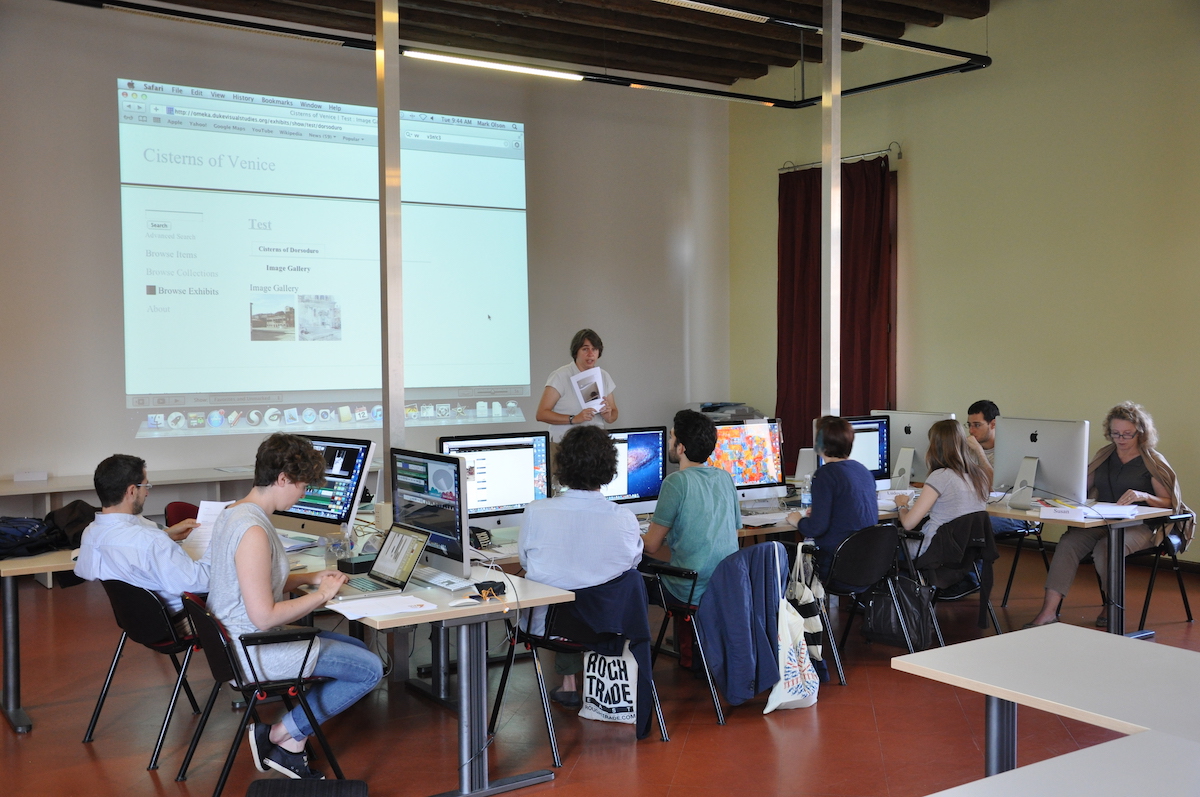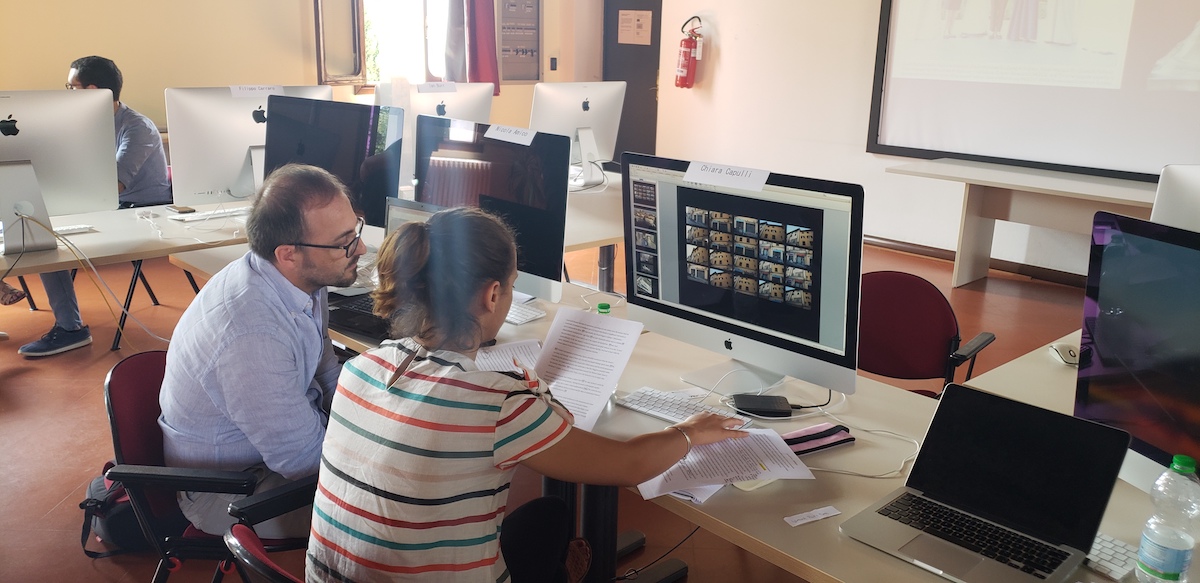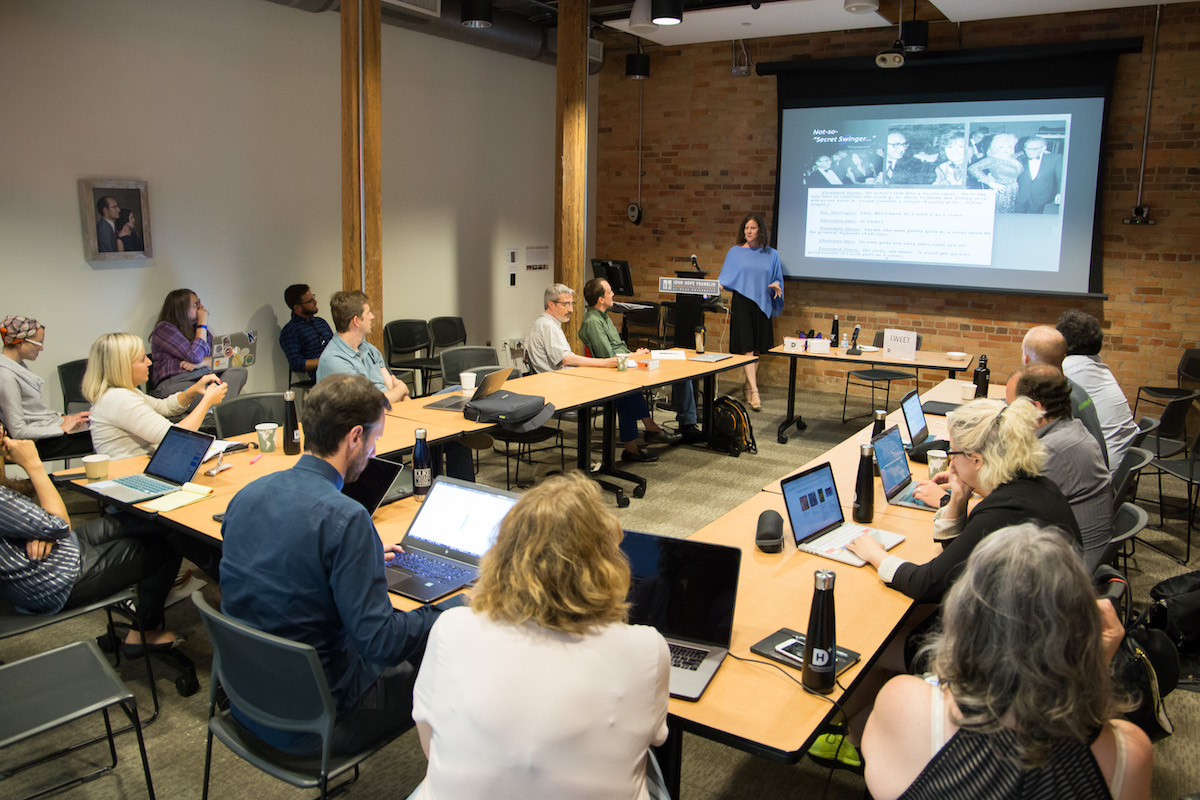Workshops and Institutes
- Victoria Szabo
From its beginning, the Wired! Lab has engaged with Digital Art History’s development not only through our own research and teaching but also through capacity building across Art History and adjacent disciplines. Within the Duke community we have offered workshops on topics like 3D modeling, interaction design in virtual environments, data visualization, digital mapping, and more—all with an emphasis on how digital tools and methods can be used to enhance the study, creation, and critique of the visual in an arts and humanities context.
As we have explored these topics in our own work, and taught them to others, it is clear to us that digital-spatial, visual, and temporal modalities enable:
- analytic comparisons of prospective, hypothetical, and counterfactual representation of past objects and structures;
- contextual and embedded annotation and citation of primary sources, and explicit, well-documented argumentation and knowledge representation;
- second-order statistical and relational analysis of collections of artifacts and phenomena that help to validate or challenge received historical narratives and hypotheses;
- complex modeling of change over time, whether in terms of architectural morphology, artistic revision, or geographical dispersion.
Central to all of these opportunities is close collaboration and communication of scholarly insights within and across disciplines. These may be effected through shared data and resources, helping to advance the field as a whole. If richly sourced, annotated, and framed content is made available online, the scholarly community can engage in a more ongoing dialogue than is made possible today through written critiques, conference presentations, etc. “Distant viewing” of individual reconstructions, hypotheses, and datasets in turn may facilitate a clearer set of standards and objectives for such work. With such insights in mind, we have extended our collaborative, lab-based approach to partnerships beyond Duke.
Initially, our series of workshops, institutes, and tutorials were created to educate our own community around the potential of digital technologies for art historical research. The first Wired! workshop took place in Durham in 2010 and introduced an array of digital practices to local faculty, staff, and students. We repeated this workshop in 2011. From 2012-2016, we worked with advanced graduate students, postdoctoral fellows, and early-career faculty in intensive, two-week summer institutes held at Venice International University and focused on specific historical case studies drawn from our shared research in connection with our Visualizing Venice collaborative.
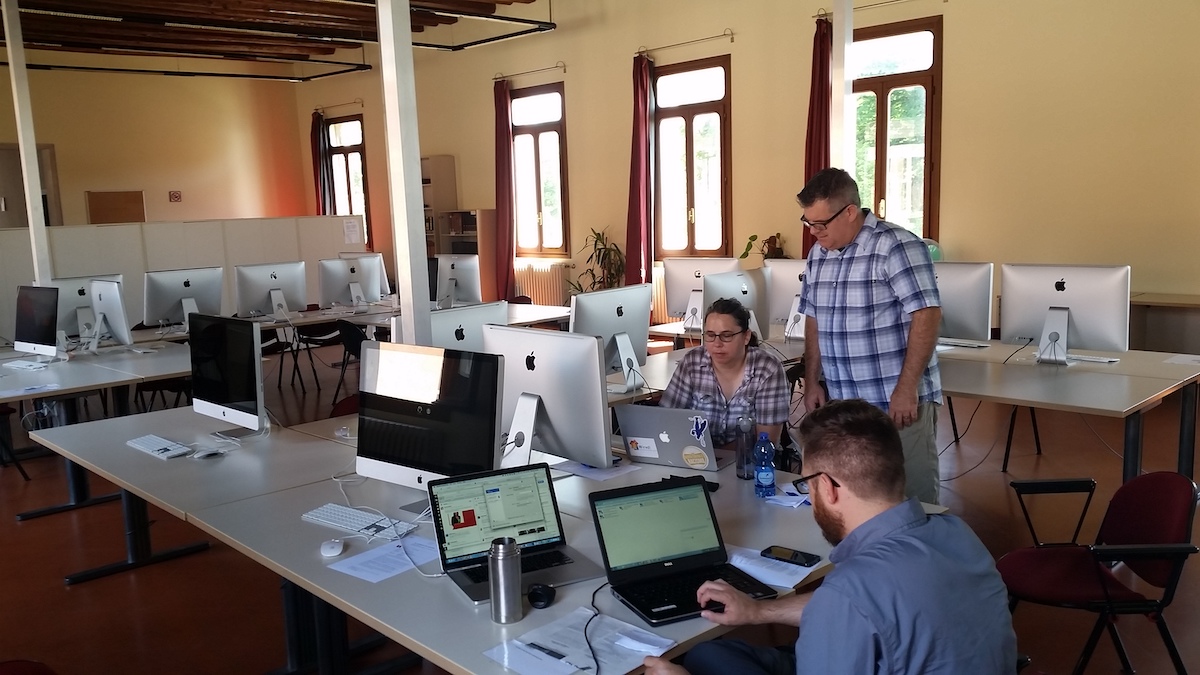
Two of these workshops were supported by the Getty Foundation, with additional support from the Kress Foundation, the Delmas Foundation, and other organizations. Workshop themes included, The Waters of Venice (2012); The Ghetto of Venice (2013 and 2016); The City and the Lagoon (2014); and The Biennale and the City (2015). Two of the most recent introductory workshops, one focused on provisioning the city, the other on the Venetian ghetto, also coincided with major Visualizing Venice exhibitions at the Palazzo Ducale.1 Other workshops featured in-depth, expert-led discussions of historical, technical, and design elements associated with museum-based exhibitions located on-site in Venice and Padua.
Throughout these workshops we introduced concepts and methods for Digital Art and Architectural History via hands-on tutorials and collaborative project development; these were based on research materials already collected from the archives by experts in the field. Much of this pedagogical approach has also made its way into our teaching in the MA in Digital Art History & Computational Media, the Art History PhD, and the Computational Media, Art & Cultures PhD programs. We continue to build on these teaching methods through project-based learning around non-Venetian topics as well. Our studies of Duke and Durham, for example, serve as content for courses, workshops open to the broader community, and programs such as the Duke-NCCU Digital Humanities Fellowships.
Throughout these workshops we introduced concepts and methods for Digital Art and Architectural History via hands-on tutorials and collaborative project development; these were based on research materials already collected from the archives by experts in the field.
After five years of success with the Venice-themed summer institutes, we shifted gears towards more advanced topics in Digital Art History and expanded our focus from Visualizing Venice to the more capacious topic of Visualizing Cities, a research direction with broad and deep interest in our extended community. From 2018-2020, and with the generous support of the Getty Foundation, we facilitated the Advanced Topics in Digital Art History 3D: GeoSpatial Networks Summer Institute, again in partnership with our colleagues in Venice and Padua, but this time also enlarging the scope of case studies in question to include those brought by the institute participants themselves.
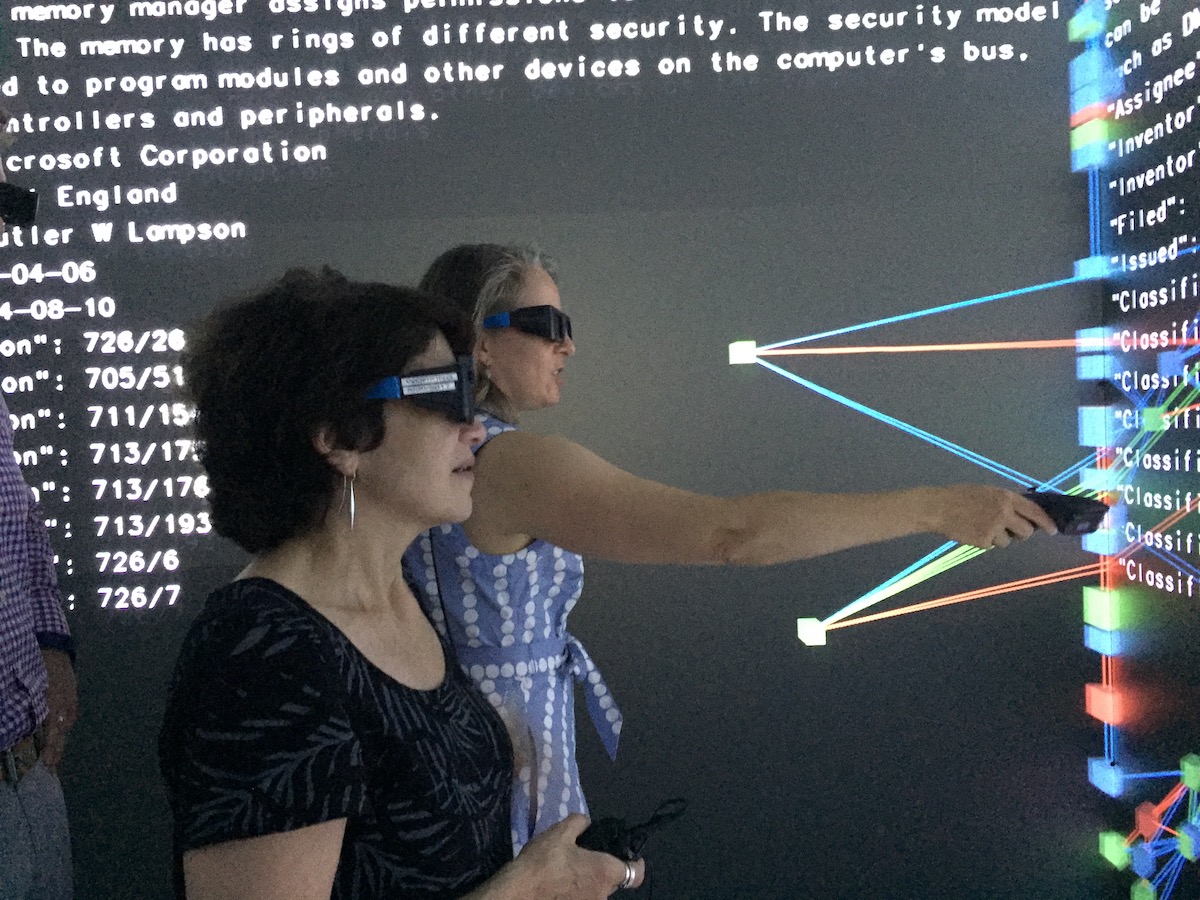
This move occurred in parallel to our broader move towards Visualizing Cities as a core research theme emerging not only among our colleagues in Visualizing Venice (now Visualizing Venice/Visualizing Cities) but also in the Wired! Lab and in our Department of Art, Art History & Visual Studies as a whole. This thematic shift reflects the diverse forms of expertise found within our core group, which includes not only art and architectural historians but also digital media specialists, technologists, and librarians with a shared interest in Digital Visual Studies.
After five years of success with the Venice-themed summer institutes, we shifted gears towards more advanced topics in Digital Art History and expanded our focus from Visualizing Venice to the more capacious topic of Visualizing Cities, a research direction with broad and deep interest in our extended community.
During the institute, we considered the needs of projects that are already well-developed in focus, content, and technical direction, in order to establish a community of practice around an emerging field. In addition to two summer sessions together, this two-year program included monthly virtual meetings and ongoing communications across research teams around technical and conceptual topics. Numerous conference talks, including two panel sessions at the College Art Association annual meetings, multiple research collaborations, grants, and spin-off activities have resulted from this effort so far.
During this period, we also led workshops at the National Humanities Center (Summer Institute on Objects, Places, an the Digital Humanities, 2017-2018), and facilitated an NEH Institute for Advanced Topics in the Digital Humanities focused on_ Virtual and Augmented Reality in the Digital Humanities _(2017-2018) and cosponsored by Duke’s John Hope Franklin Humanities Institute. Each of these experiences has in turn impacted the ways in which we are reimagining work within and beyond the traditional bounds of Art History and Visual and Media Studies as disciplinary practices.
Building on the success of our most recent summer institutes, we anticipate continuing to foster virtual communities focused on Digital Art History and Visual Culture through future institutes and the Visualizing Venice/Visualizing Cities collaborative.
Building on the success of our most recent summer institutes, we anticipate continuing to foster virtual communities focused on Digital Art History and Visual Culture through future institutes and the Visualizing Venice/Visualizing Cities collaborative. We will also continue to focus growing attention on the affordances of emerging media forms for digital scholarship and its communication. Through Visualizing Venice/Visualizing Cities, we are finding new synergies around such diverse spatio-temporal locales as ancient Athens, early modern Paris, nineteenth-century Durham, H. P. Lovecraft’s imagined early twentieth-century Providence, and mid-twentieth-century Krakow under Nazi occupation. As we consider aesthetic objects and built environments contextualized within and comprising these environments, we are in turn developing innovative methods for the creation and transmission of new knowledge in Art History and Visual and Media Studies. All of these insights will form new city-based case studies for further exploration in our workshops and institutes.
Banner Image: Composite of the historic and present day site of the Venice Biennale with pavilions plotted in purple. Image Credit: Hannah L. Jacobs
